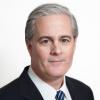
Mission Management
Ask any doctor, lawyer or accountant how many continuing education credits they are required to take each year to maintain their license and they will quickly rattle off the number. Satisfying these rules is often time-consuming, not particularly exciting, but necessary and enriching. It’s what professionals have to do in order to properly serve their clients and to remain in good standing with regulators.
Not so with priests. While canon law requires ongoing formation for priests, without any penalty for failing to participate, the so-called “requirement” is not satisfied.
How does this affect priests, laypeople and the church?
“A lot,” says Jim Alphen, executive director of the Chicago-based National Organization for the Continuing Education of Clergy, which is trying to create a culture of lifelong learning for priests.
The organization has been tasked by the U.S. bishops to implement the principles outlined in the 2000 document “The Basic Plan for the Ongoing Formation of Priests.”
“There continues to be an evolution of understanding of the ongoing formation of priests,” said Alphen. “Today we understand that formation is lifelong, not episodic.” Alphen points out that for laypeople, ongoing formation is not new, as it often occurs in the workplace.
The organization’s vision of a framework for ongoing formation involves the three offices of the priesthood -- teaching, sanctifying and governing -- along with four basic dimensions -- human, intellectual, pastoral and spiritual. “We are creating a human system, not a program,” said Alphen.
How does a diocese implement a culture of lifelong learning for priests?
“It’s important to appoint a priest who is passionate about ongoing formation as the director of the ongoing formation office,” said St. Cloud, Minn., Bishop John Kinney, a member of the National Organization for the Continuing Education of Clergy.
“For the last 35 years, our diocese holds an annual three- to four-day convocation for priests and I attend each day,” Kinney said. “We integrate the four dimensions into each year’s gathering.”
According to Kinney, one value of annual convocations of priests is that “priests need time together to be ‘just priests,’ ” he said.
The national organization’s annual convention provides another opportunity for priests to enter into the discussion about ongoing formation, said Alphen. The next three annual conventions will focus on teaching, sanctifying and governing.
“Creating a ‘culture of ongoing formation’ is not easy,” said Fr. Norbert Maduzia, president of the national organization and pastor of a 3,500-family parish, St. Ignatius of Loyola in Spring, Texas. “As long as priests keep working 14-plus-hour days and the needs of the laity are being met, there will not be a change in culture.”
A collaborator with the national organization, the St. Meinrad Institute for Priests and Presbyterates in Indiana, offers ongoing formation for priests in their first five years of ministry, for first-time pastors and for presbyterates. The institute was founded in 2004 with a $2 million grant from the Lilly Foundation. Today, dioceses and priest-participants underwrite program costs.
“The institute takes a holistic approach to ongoing formation,” said Fr. Ron Knott, a Louisville, Ky., priest and founding director of the institute. Among the institute’s offerings are classes on simple cooking, nutrition, counseling, spiritual direction and maintaining physical health, he said. Many of these classes are taught by laypeople.
Six months after a priest’s ordination, the institute visits him and interviews his pastor and a parish staff members. Six months later, the priest is brought back to St. Meinrad to work on a personal growth plan.
Over 65 dioceses participate in the institute’s work. These dioceses are required to appoint a priest-mentor for the newly ordained priest. Then the institute works with the mentor and priest to make the most of the relationship.
“One important outcome of this ongoing formation process is that when priests come back to the seminary they are modeling a culture of lifelong learning for the current seminarians,” said Knott. The informal dialogue with the young priests “has had a huge impact on the seminarians.”
“Bishops in their role as pastors need to be passionate about providing ongoing formation for their priests,” said Kinney.
Maduzia agrees. “If we truly believe we are in communio [in deep relationship] with God and one another, then we should realize that we priests need ongoing formation,” he said.
As for the role of laypeople, “we need the support of the laity in our journey as priests as much as the laity needs priests for their journey,” said Maduzia.
Tom Gallagher is a regular contributor to NCR. Ideas for a “Mission Management” story? Contact him at tom@tomgallagheronline.com.
Related Web sites
"The Basic Plan for Ongoing Formation of Priests"
www.usccb.org/plm/ongoing.shtml
National Organization for the Continuing Education of Clergy
www.nocercc.org
St. Meinrad Institute for Priests and Presbyterates
ipp.saintmeinrad.edu


